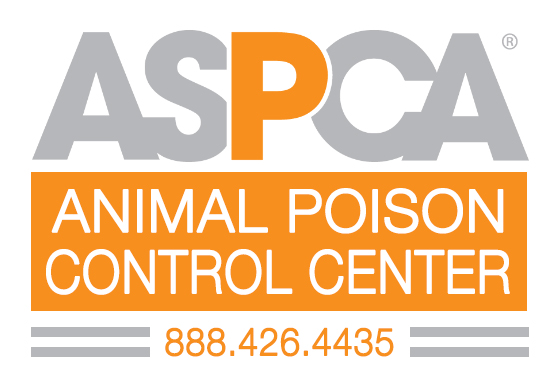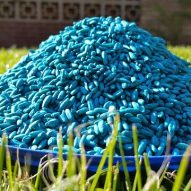Cholecalciferol poisoning in dogs and cats
Cholecalciferol is the chemical name for Vitamin D3, and is commonly found in many household products. Sources of Vitamin D3 – or even the less potent form D2 – include the following:
- Vitamin D3 multivitamins
- Concentrated Baby Vitamin D Drops
- Over-the-counter supplements
- Prescription strength supplements or vitamins
- Omega Fatty Acid Vitamin D3 Gummies
- Topical psoriasis cream (commonly called “Dovonex” and fond in the form of calcipotriene)
- Mouse and D-con Rat Poison
Despite having the “vitamin” in its name, cholecalciferol can be quite toxic when accidentally ingested by dogs and cats. When ingested, it causes the body to absorb too much calcium from the gastrointestinal tract, bone, and kidneys. This results in life-threatening high calcium (“hypercalcemia”) and phosphorous (“hyperphosphatemia”) levels in the body; this can cause secondary boney changes (“mineralization”) to the tissues of the body. Organs such as the kidneys, intestines, aorta, and heart can be affected. When mineralization occurs, it can result in severe acute kidney injury (AKI) within a few days.
Cholecalciferol comes in various concentrations and strength. With multivitamins, Vitamin D3 typically has a wider margin of safety. Most vitamins contain a large range of Vitamin D3 per tablet (ranging from 400 IU to 5000 IU). One IU of vitamin D3 is the equivalent of 0.025 mcg or 0.000025 mg of Vitamin D3.
More dangerous sources of cholecalciferol include mouse and rat poison (commonly under the brand name Tomcat, Terad3, Quintox, etc.). Unfortunately, these mouse and rat poisons have a very narrow margin of safety, meaning it only takes a small amount to result in severe poisoning and secondary AKI. In fact, with certain brands, it only takes as little as 1 ounce (one block) of mouse and rat poison to result in potential kidney failure in a 70-80 pound dog. In dogs, the lethal mouse and rat poison dose that kills 50% of patients that get into it (commonly called the LD50) is only 85 mg/kg (based on the concentration of 0.075%). Toxic doses of Vitamin D3 are considered to be as low as 0.1 mg/kg of body weight.
Breeds predisposed
While no specific breed of dog is predisposed, accidental poisonings are more commonly seen in puppies or younger dogs. That’s because younger dogs may not be crate trained as well, or may be more curious in nature. Cats are also more sensitive to cholecalciferol.

Clinical signs
Clinical signs of Vitamin D3 poisoning often don’t develop for 1-3 days until kidney failure has already taken place. Signs include:
- Inappetance or not eating
- Vomiting
- Bad breath secondary to kidney failure
- Diarrhea
- Excessive or decreased thirst and urination
- Lethargy/weakness
- Dehydration
- Black, tarry stool
- Bloody stool
Additional findings that your veterinarian may detect on physical examination include:
- Dehydration
- Abdominal pain
- Ulcers in the mouth
- Abnormal stool on rectal exam
- An elevated heart rate
- Increased kidney values
Diagnostics
Your veterinarian will need to do several tests when it comes to cholecalciferol poisoning, including:
- Complete blood count (looking at the white and red blood cells and platelets)
- Chemistry (looking at the kidney and liver function, protein, blood glucose/sugar, electrolytes)
- Urinalysis
- Venous blood gas (to look at electrolytes and the pH of the blood)
- Ionized calcium levels
Blood work changes seen with cholecalciferol poisoning include:
- Hypercalcemia
- Hyperphoshatemia
- An elevated red blood cell count (due to dehydration) or an anemia (due to more chronic damage to the kidneys)
- Increased kidney values (e.g., BUN, creatinine), indicative of kidney failure (or severe dehydration)

Treatment
Treatment must be initiated with cholecalciferol poisoning, due to the narrow margin of safety. Treatment includes:
- Inducing vomiting, if the product was recently ingested (within 1-2 hours)
- Giving activated charcoal to help bind the poison from the intestinal tract and a drug called cholestyramine to help bind the poison from the gall bladder
- Anti-vomiting medication (to help keep the charcoal down)
- Frequent blood work monitoring to make sure the calcium and kidney values levels don’t increase.
- If the calcium level is increased: IV fluids to flush out the calcium and help flush the kidneys
- If the calcium level is increased: Medications to help decrease the elevated calcium levels (e.g., including drugs like prednisone, furosemide, pamidronate, or calcitonin) – these often need to be given intravenously while in the hospital, and then used chronically at home for several weeks.
Treatment of cholecalciferol poisoning used to be very expensive, as hospitalization used to be recommended for 2-7 days (or until the calcium levels return to normal). Another added expense is the frequent blood work monitoring (e.g., specifically for kidney function, calcium, and phosphorous) every 12-24 hours while hospitalized, and then every 2-3 days thereafter for the next 2-4 weeks once discharged. However, recent recommendations from the ASPCA Animal Poison Control Center found that hospitalization may now be reduced with aggressive decontamination and monitoring instead.
Prevention
The best way to avoid this deadly poisoning is to make sure your house is appropriately pet-proof. Crate training your puppy early in his or her life is the safest way to prevent accidental poisonings. Keeping OTC and prescription medications out of reach (e.g., high up on a closed shelf) is key. Avoid the use of any type of mouse and rat poison in your house, garage or yard; instead, consider more humane and environmentally friendly snap traps instead.
Prognosis
Even with aggressive treatment, cholecalciferol poisoning can have long-lasting affects and result in secondary chronic renal (e.g., kidney) failure (CRF). This can dramatically shorten the lifespan of the pet. As with most poisoning cases, the longer you wait, the most expensive it is to treat and the worst prognosis for your dog or cat. When in doubt, if you suspect your dog or cat got into cholecalciferol, seek veterinary attention immediately or contact the ASPCA Animal Poison Control Center for life-saving advice. #ad



Please help, any info would be grateful!
My dog ate rat poison three days ago. It has Cholecalciferol . I took her to the vet two hours after she ingested the cube of poison. Her calcium levels were 14.7 when she arrived. The next day they come down to 12.5. Today they’re back up to 14. It cost around $600 for the first visit, and $300 a day sense. They have been giving her medication through an IV to flush her kidneys . I don’t know what to do. She seems fine and happy! But I know if she does not get this treatment, she will not even stand a chance for survival. My wife and I have no kids. This is our child. But money is a issue. I’ve spent over $1000 in just three days. And the vet cannot tell me how long this will last, or even guarantee she will get better.
I feel that I cannot give up on my dog! I want to give her every chance of survival and live a full life. She does not seem sick, she still running around and playing when I bring her home in the evenings. But I know if I stop treatment, she will die! But when her numbers went back up today, i’m scared she’s going to die anyway. I’m so scared and I do not know what to do! If you have any advice please let me know. I don’t want to lose our baby girl🥲
Thanks in advance!
Jerry…
It sounds like she should make it – should be able to go home soon and just monitor the blood work. I would call the 800-# on the box of the cholecalciferol to have the case reviewed by their veterinarian and/or call ASPCA APCC for advice too!
Jerry, I’m curious about how your dog did after treatment. I’m in the same boat and am beside myself at the thought of losing my baby!
Comment *
Comment my dog ate all my D3 Vitamins. Will my dog be okay?
Comment *Hi, a similar thing just happened to my dog. I just took her to the vet today and waiting on blood work. Wondering how it ended up for your dog?